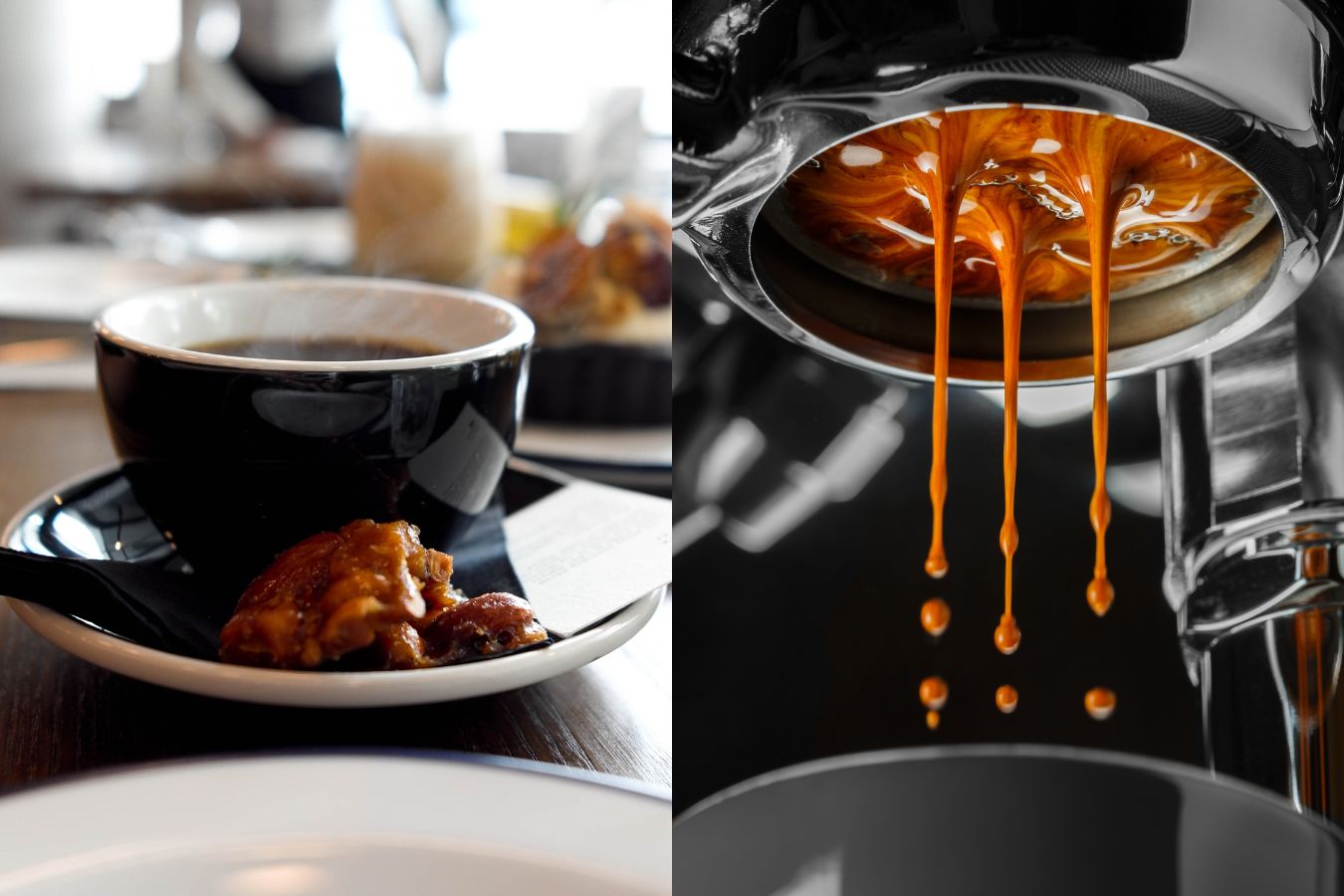SOE Single Origin Espresso – A Perfect Gift for Coffee Aficionados
SOE Single Origin Espresso – A Perfect Gift for Coffee Aficionados
Blog Article
Coffee Beans 101: Everything You Required to Find Out About Coffee and Blended Coffee Beans
When it comes to coffee, understanding the subtleties of espresso and mixed beans can transform your everyday mug. From the growing procedure to toasting methods, every step plays a role in your coffee experience.
Understanding Coffee Beans: Kinds and Ranges
When diving into the world of coffee, understanding the types and selections of coffee beans is necessary for every single fanatic. You'll largely run into two main species: Arabica and Robusta. Arabica beans are known for their smooth, complicated tastes and reduced caffeine web content, making them a favorite among coffee aficionados. On the various other hand, Robusta beans pack a strike with a stronger, more bitter taste and higher caffeine degrees, typically made use of in coffee blends.
Within these types, you'll locate different regional varieties, each bringing unique attributes. Ethiopian Yirgacheffe provides bright flower notes, while Colombian beans provide a well-balanced flavor profile. As you check out, bear in mind to pay focus to processing methods like cleaned or natural, as they can greatly affect the final preference. By acquainting on your own with these beans and their flavors, you'll elevate your coffee experience and make even more informed options in your developing journey.
The Growing Process: From Seed to Bean
When you discover the trip of coffee, it all starts with seed option strategies that set the structure for high quality. From there, farming and gathering play essential duties in making sure the beans prosper. Handling methods change those harvested cherries into the coffee beans you like.
Seed Choice Methods
Choosing the appropriate seeds is important for producing premium coffee beans, as it lays the structure for the whole growing procedure. Pay attention to the seed's age and storage space conditions, as fresh seeds often tend to germinate much better. Take into consideration the disease resistance of different ranges, as this can substantially impact your return.
Cultivation and Harvesting
As you support your coffee seeds right into thriving plants, understanding the cultivation and harvesting procedure is essential for achieving the finest taste and top quality. Start by planting your seeds in well-draining soil, ideally in a shaded location to safeguard them from straight sunlight. As your plants grow, maintain regular wetness, and bear in mind their need for nutrients. Trim frequently to promote airflow and healthy growth.
When it comes time to harvest, search for ripe cherries, which commonly transform a lively red. Hand-picking is usually the finest approach to ensure only the ripest cherries are picked. Timing is essential; harvesting prematurely or as well late can impact the flavor profile of your beans. Welcome persistence and treatment, as this is where quality starts.

Handling Techniques Discussed
Once you've collected your coffee cherries, the next vital step is refining them to transform those vivid fruits right into the beans you'll brew. There are 2 primary methods: the wet procedure and the dry process. In the dry procedure, you spread the cherries out in the sun to dry, allowing the fruit to ferment and give distinct flavors to the beans. On the various other hand, the wet procedure involves removing the fruit instantly and fermenting the beans in water, causing a cleaner taste. After processing, the beans are hulled, arranged, and usually dried again. Each method influences the flavor profile, so exploring with both can help you discover your preferred mixture. Understanding these approaches is vital to appreciating your coffee experience.
Roasting Techniques: Just How Taste Is Created
When it concerns toasting coffee beans, recognizing roast degrees is crucial to disclosing their one-of-a-kind tastes. Each toasting technique impacts the fragrance and enhances the taste growth procedure, offering you a richer coffee experience. Let's check out just how these elements integrated to boost your daily mixture.
Roast Levels Discussed
Roast degrees play a vital duty in shaping the flavor account of your coffee. You'll delight in bright level of acidity and fruity notes when you select a light roast. As you transfer to a medium roast, you'll observe a balance of sweetness and intricacy, often highlighting chocolate or sugar flavors. Dark roasts, on the other hand, supply bold, smoky qualities with much less level of acidity, making them robust and abundant. Each degree results from various roasting times and temperatures, affecting the beans' chemical make-up. By understanding these degrees, you can much better pick a coffee that matches your preference choices. Explore various roasts to find which one reverberates with you, enhancing your overall coffee experience and satisfaction.
Effect on Fragrance
The roast degree not just affects the preference of your coffee however additionally considerably influences its aroma. When you pick a light roast, you'll usually discover intense, flower notes that can make your coffee odor fresh and vivid. As the beans darken, the scent changes; a tool roast highlights extra well balanced, caramelized aromas, while a dark roast tends to include strong, smoky touches. Each toasting method launches various volatile substances, shaping exactly how your coffee smells. Additionally, the quality of the beans plays a critical duty; freshly roasted coffee launches much more fragrant oils, boosting that tempting fragrance. So, pay attention to the roast level-- it's vital to disclosing the complete aromatic experience of your brew.
Flavor Growth Process
As you discover the flavor development process, you'll uncover that toasting techniques play a critical role in forming the preference account of your coffee. The toasting temperature and time straight affect the level of acidity, sweet taste, and bitterness of the beans. Light roasts preserve even more of the bean's initial tastes, highlighting floral and fruity notes.
Espresso vs. Blended Coffee: Trick Differences
Espresso and mixed coffee each offer one-of-a-kind experiences that satisfy different tastes and preferences. Coffee is a focused coffee made by forcing warm water with finely-ground coffee beans, leading to a rich, bold taste and a creamy layer of crema ahead. It's usually appreciated as a shot or utilized as a base for drinks like coffees and lattes.
On the other hand, mixed coffee combines numerous beans from different regions, producing a much more balanced taste profile. You'll commonly find blends that highlight sweet taste, level of acidity, or body, making them versatile for various developing techniques. While coffee concentrates on intensity, combined coffee may offer a wider variety of tastes that can change with each sip.
Inevitably, your selection between coffee and combined coffee boils down to your individual preference. Whether you long for a leisurely mug or a quick shock, both options have something scrumptious to use.

Developing Techniques: Unlocking the Perfect Mug
When it pertains to brewing coffee, finding the right technique can change your experience and elevate your mug. Each developing technique has its special appeal and can greatly influence your coffee's flavor and fragrance. As an example, making use of a French press permits you to enjoy a abundant and robust mixture, while a pour-over approach gives a clean, brilliant mug with unique tastes.
If you choose coffee, purchasing a high quality maker can help you grasp the art of pulling shots. For ease, a single-serve vessel system uses speed without sacrificing preference.
Don't neglect about cold mixture, which delivers a smooth, much less acidic coffee suitable for warm days. Experiment with various methods to find what resonates with your taste buds. Each developing method opens a brand-new globe of possibilities, so make the effort to check out and find your excellent cup. Satisfied developing!
Sampling Notes: Recognizing Taste Profiles
Exactly how can you truly value your coffee if you do not understand what tastes to look for? Tasting notes are your guide to comprehending the complicated globe of coffee. When you sip, take notice of the initial tastes that hit your taste buds. You may identify fruity notes, like berry or citrus, or probably a nutty touch. As you remain to taste, notice exactly how the SOE flavors develop-- this is called the "coating." Some coffees might leave a chocolatey or sugar aftertaste, while others may have a bright, tidy coating.
Consider the body of the coffee, also; is it light and airy or thick and syrupy? Do not forget acidity; an intense level of acidity can include liveliness, while a reduced level of acidity may give a smoother experience. By identifying these taste accounts, you'll deepen your connection with each cup, making coffee sampling a fascinating trip of discovery.

Tips for Picking and Keeping Coffee Beans
Keeping and choosing coffee beans appropriately can significantly enhance your developing experience. Begin by choosing top quality beans that match your taste - SOE.
Once you have your beans, keep them in an impermeable container to stop exposure to air, light, and moisture. A dark, awesome place functions best, so avoid maintaining them in the refrigerator or fridge freezer, as this can present dampness. Just grind the quantity you need to keep quality; entire beans preserve taste longer than pre-ground coffee.
Lastly, attempt to use your beans within two to 4 weeks after opening for peak preference. Complying with these pointers will ensure your coffee stays enjoyable and delicious, boosting your day-to-day mixture to new heights.
Regularly Asked Inquiries
How Much Time Do Coffee Beans Remain Fresh After Roasting?
Coffee beans stay fresh for concerning 2 weeks after toasting - SOE. You must keep them in a closed container, away from light and moisture. Afterwards, their taste and fragrance start to decrease substantially

Can I Mix Different Coffee Bean Varieties?
Definitely, you can mix various coffee bean selections! Trying out blends can enhance flavors and develop an unique preference account. Just see to it to balance the staminas and characteristics of each variety for the ideal outcomes.
What Is the Perfect Grind Dimension for Espresso?
For coffee, you'll want a fine grind dimension, concerning the appearance of salt. This enables suitable removal, causing an abundant, flavorful shot. Experiment a bit to discover what matches your preference best!
Just How Does Elevation Affect Coffee Bean Flavor?
Elevation influences coffee bean taste by affecting the development price and chemical composition. Greater elevations result in slower growth, which enhances level of acidity and complexity, providing your coffee a lively and one-of-a-kind preference you will not forget.
Are There Decaffeinated Versions of Coffee Beans?
Yes, there are decaffeinated variations of espresso beans. You can enjoy an abundant coffee flavor without the caffeine kick. Just seek "decaf" blends at your regional coffeehouse or specialty store.
Coffee Beans 101: Whatever You Required to Know Concerning Espresso and Blended Coffee Beans.
When diving right into the globe of coffee, understanding the kinds and varieties of coffee beans is important for every lover.When it comes to toasting coffee beans, comprehending roast levels is key to revealing their unique tastes. Coffee is a focused coffee made by forcing hot water through finely-ground coffee beans, resulting in an abundant, strong flavor and a creamy layer of crema on top.On the various other hand, blended coffee incorporates different beans from different areas, producing an extra balanced taste profile.
Report this page